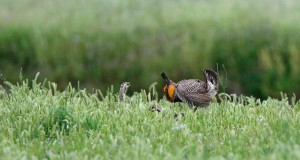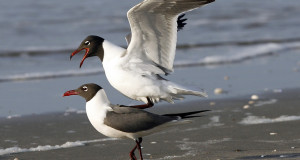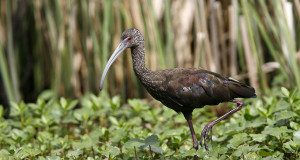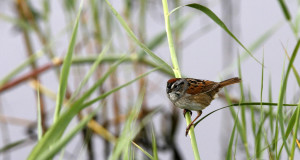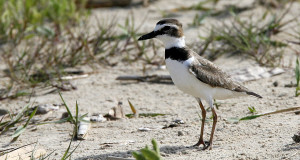An early morning visit to the breeding grounds of the endangered Attwater's Prairie Chicken.
Read More »Crowdsourcing bird sightings at eBird
Know what birds are where and when to look for them with Cornell University's amazing eBird site.
Read More »Getting comfortable with bird sex
When birds are having sex, it's hard to keep watching - or to stop.
Read More »White Ibis
White Ibises forage in groups at the water’s edge, using their long, curved bills to sift through the mud, turning up crawfish, frogs, insects and other edibles.
Read More »White-faced Ibis
White-faced Ibises have a beautiful iridescent plumage that shines bronze, red and green in bright sun. It is hard to distinguish from its cousin, the Glossy Ibis, but it is by far the more common on the Texas coast.
Read More »Swamp Sparrow
Not surprisingly, Swamp Sparrows are found in swamps and other grassy habitats near water, often clinging to reeds with their longish legs.
Read More »Tri-colored Heron
Tri-colored Herons at a glance are similar to both the Great and Little Blue Heron, with long legs, a slender body and an overall blue-gray plumage. All forage for food among the shallows of wetland habitats. But the similarities end there.
Read More »Turkey Vulture
Turkey Vultures soar on their enormous wings high above wetlands, forest and prairie, often in small groups, turning in slow circles. They feed on dead animals, often crowding around roadkill on the side of the highway.
Read More »Willet
Willets fly about marsh prairies and rocky shorelines but are most common on Texas beaches and mudflats, foraging in the shallows of the waves' backwash and among the leavings from high tide.
Read More »Wilson’s Plover
Wilson's Plover is the largest belted Plover but smaller than the Killdeer, which has two collar bands to the Wilson's Plover's one.
Read More »